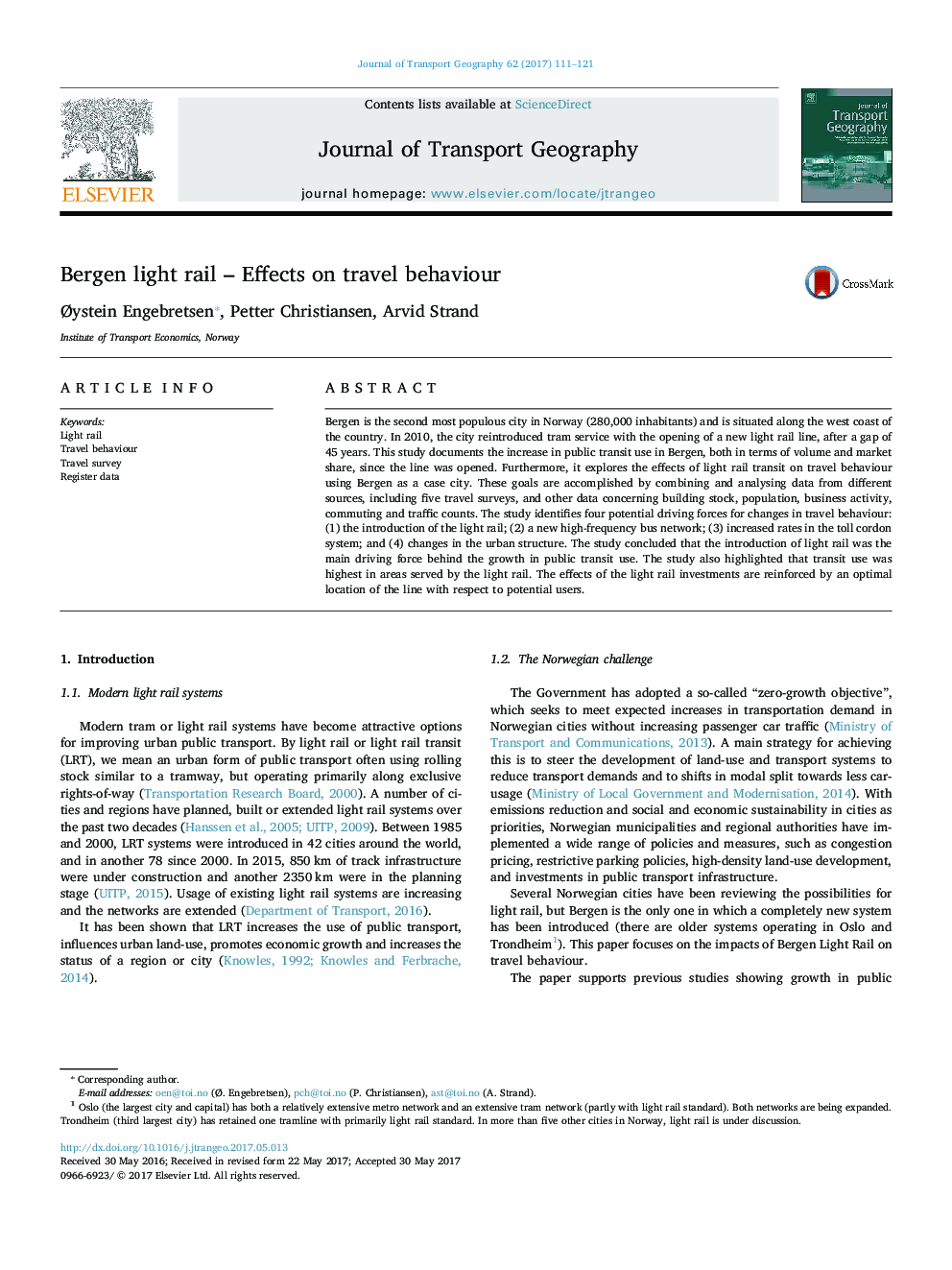| Article ID | Journal | Published Year | Pages | File Type |
|---|---|---|---|---|
| 5117528 | Journal of Transport Geography | 2017 | 11 Pages |
Abstract
Bergen is the second most populous city in Norway (280,000 inhabitants) and is situated along the west coast of the country. In 2010, the city reintroduced tram service with the opening of a new light rail line, after a gap of 45Â years. This study documents the increase in public transit use in Bergen, both in terms of volume and market share, since the line was opened. Furthermore, it explores the effects of light rail transit on travel behaviour using Bergen as a case city. These goals are accomplished by combining and analysing data from different sources, including five travel surveys, and other data concerning building stock, population, business activity, commuting and traffic counts. The study identifies four potential driving forces for changes in travel behaviour: (1) the introduction of the light rail; (2) a new high-frequency bus network; (3) increased rates in the toll cordon system; and (4) changes in the urban structure. The study concluded that the introduction of light rail was the main driving force behind the growth in public transit use. The study also highlighted that transit use was highest in areas served by the light rail. The effects of the light rail investments are reinforced by an optimal location of the line with respect to potential users.
Related Topics
Life Sciences
Environmental Science
Environmental Science (General)
Authors
Ãystein Engebretsen, Petter Christiansen, Arvid Strand,
